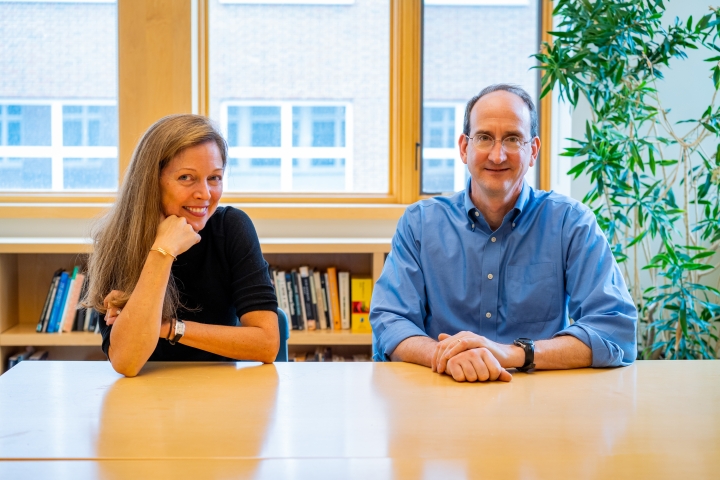A safe and effective vaccine for COVID-19 was developed, produced, and began to be delivered to the U.S. population in a time span of only 11 months thanks to Operation Warp Speed, an innovation mission implemented by the U.S. government.
Established in May 2020, Operation Warp Speed was modeled after the Manhattan Project during World War II for which the U.S. employed three research and development approaches, rather than one, in its race to build the world’s first atomic bomb before Nazi Germany.
To accelerate COVID-19 vaccine development through Operation Warp Speed, the U.S. supported the development of six vaccine candidates with the goal that 300 million doses would be made available to the public by January 2021. The project had a budget of approximately $18 billion.
Operation Warp Speed’s success in procuring COVID-19 vaccines can be attributed to its mission-style structure, which can be used as a model to accelerate other innovations, according to researchers from Dartmouth and the Institute for Progress.
“Through Operation Warp Speed, many of the shots on goal that the U.S. government took to develop COVID-19 vaccines, including the long-shot technology of mRNA vaccines, actually worked,” says co-author Christopher Snyder, the Joel Z. and Susan Hyatt Professor of Economics and a faculty member of the Dartmouth International Vaccine Initiative.
Unlike traditional vaccines, which use dead, weakened, or fragmented microbes to stimulate an immune response, messenger ribonucleic acid instructs human cells to produce the proteins that will generate an immune response.
The team’s work is reported in a recent policy paper posted as part of the National Bureau of Economic Research Working Paper series, which will be featured in the NBER’s annual volume on Innovation Policy and the Economy.
In the paper, the co-authors examine the factors that allowed Operation Warp Speed to succeed and identify the characteristics that would make other important technical challenges, such as carbon capture or developing a drug or vaccine for Alzheimer’s disease, a good candidate for a mission approach.
They suggest that a social problem that is a good candidate for an innovation mission must be a national priority, time sensitive, and have a clearly defined technological goal. This was the case for Operation Warp Speed in which millions of lives were at stake without a vaccine for COVID-19. Other past innovation missions, including the Manhattan Project and the Apollo program to send U.S. astronauts to the moon as part of the space race against the Soviet Union, also demonstrated these attributes.
Missions of innovation also require “market-shaping incentives,” funding mechanisms to incentivize bringing the desired innovation to market within a set timeframe, to help overcome the gap between the social need and commercial market returns as the social need exceeds the latter.
“Some consumer decisions—getting vaccinated against a pandemic disease, using clean energy—have ripple effects benefiting society at large, which individuals aren’t willing to pay the full premium for,” says Snyder, a faculty director of the Market Shaping Accelerator, headquartered at the University of Chicago. “In these markets, public funding can boost companies’ incentives to provide needed innovation.”
Innovation is often driven by “push funding” or grants for the start of a project but there’s also another type of funding called “pull funding,” which promises payment if the innovation is invented.
With Operation Warp Speed, the U.S. government drew on both push funding and pull funding, promising payments to purchase the COVID-19 vaccine at a predetermined price provided it met certain specifications.
“Operation Warp Speed exemplifies how innovation missions are not business as usual but require special resources, leadership, and processes to develop a new technology,” says co-author Kendall Hoyt, faculty director for the Dickey Global Health Initiative’s Pandemic Security Project, an assistant professor of medicine at the Geisel School of Medicine, and faculty member of the Dartmouth International Vaccine Initiative.
The co-authors argue that an Operation Warp Speed-style mission could be useful for accelerating other innovations, such as carbon-removal technologies to help address climate change, a global concern for which there are few financial incentives to tackle it.
Furthermore, while commercial incentives and public funding programs are already in place for Alzheimer’s disease, elements of Operation Warp Speed, such as pull funding and expediting clinical trials and regulatory review, could be beneficial.
“If a technological problem is socially urgent and it cannot be solved through traditional market mechanisms, a mission approach can be useful,” says Hoyt, who also teaches a technology and biosecurity course at Thayer School of Engineering and is the author of Long Shot: Vaccines for National Defense.
Arielle D’Souza and Alex Stapp at the Institute for Progress also contributed to the study.
